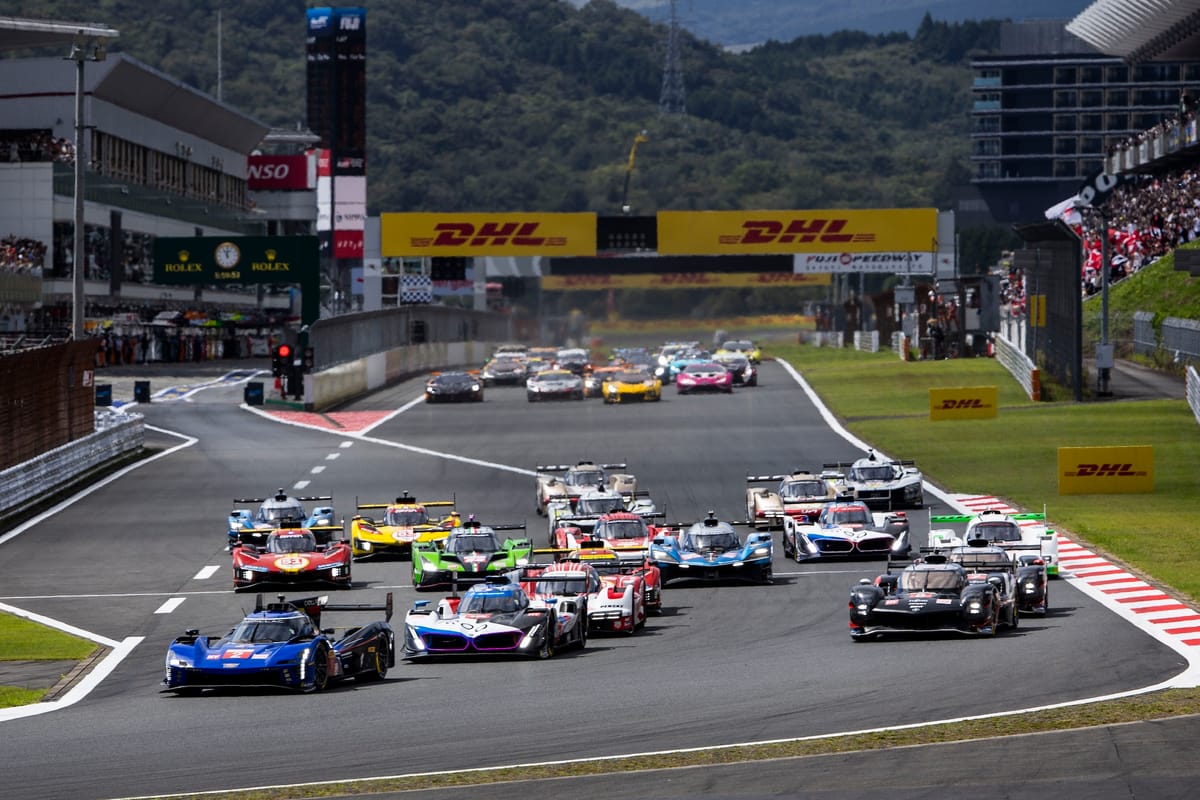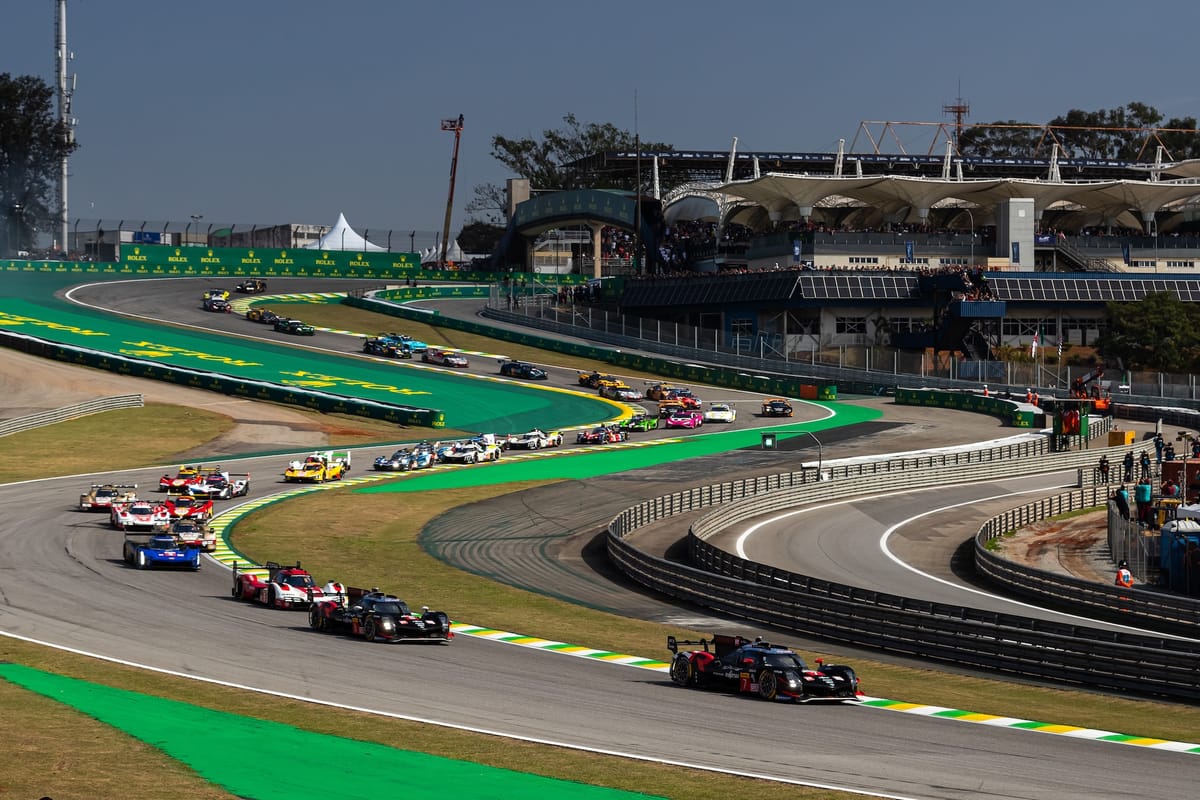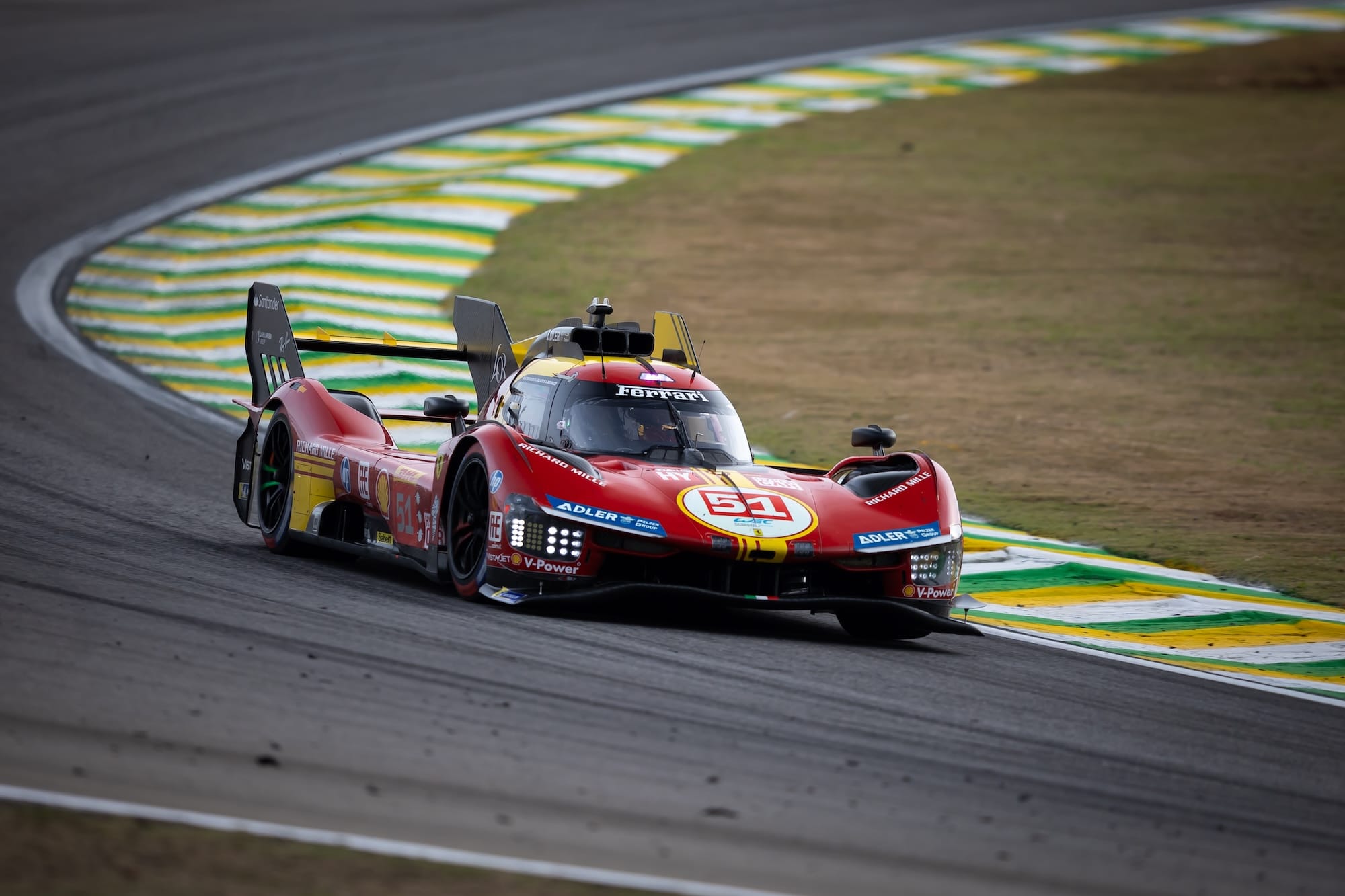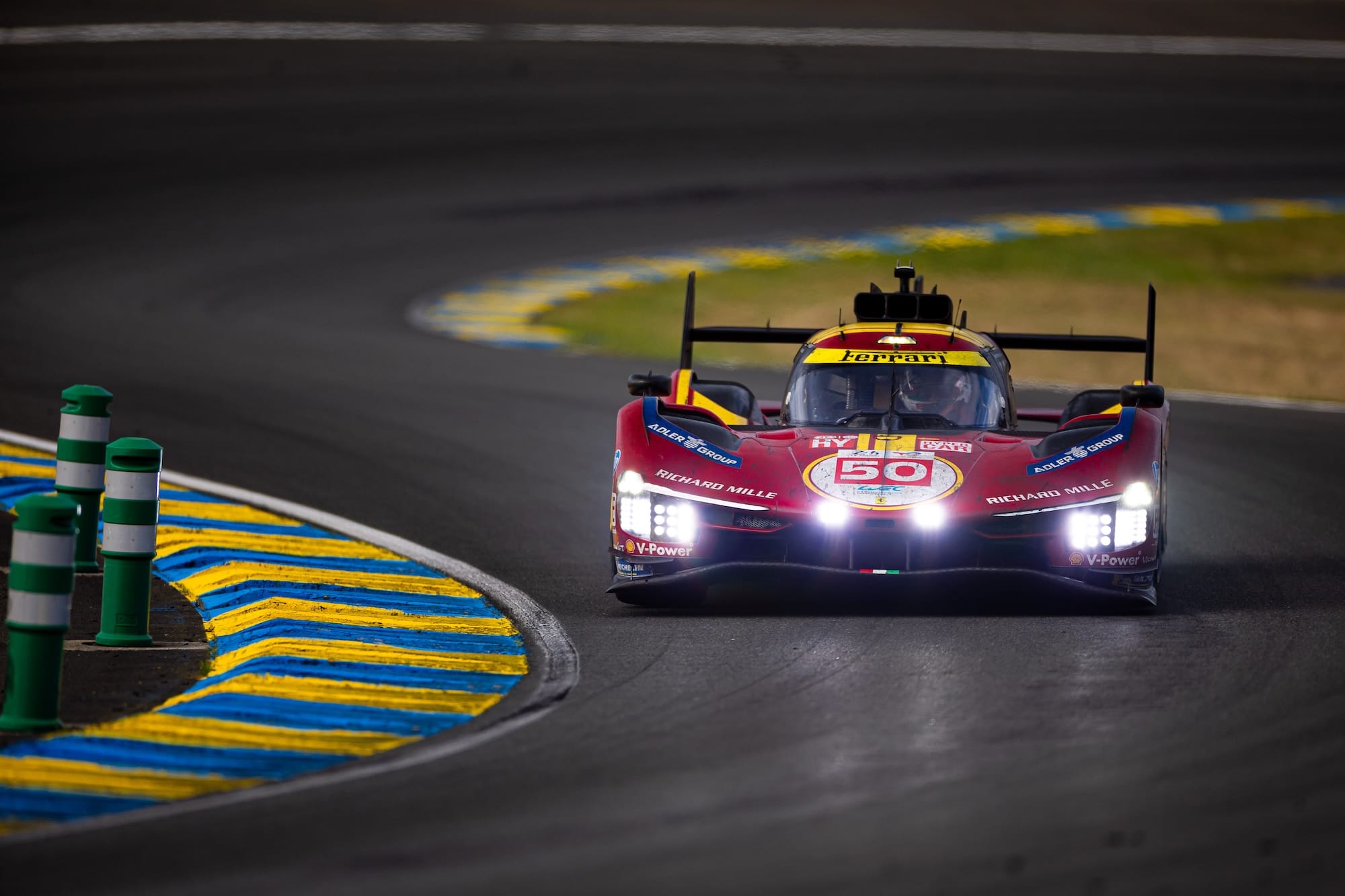Download The Racing Line on iOS today and get 70% off a year's subscription!
Ferrari may not be as strong in the second half of the 2025 FIA World Endurance Championship, due to the tracks not playing to the 499P's strengths, team management told Only Endurance earlier in the season.
Speaking at Spa-Francorchamps prior to the 6 Hours of Spa, the third round of the season, Mauro Barbieri, Ferrari's endurance race cars performance manager, told Only Endurance, 'I'm waiting for the second half of the season, because especially last year, [that] is where we suffered the most. I'm thinking about Fuji and Sao Paulo mainly while in COTA [Circuit of The Americas], we were okay.'
Ferrari dominated the first half of the 2025 WEC season, winning all four races, including Le Mans last month, fighting Porsche for the win.

But, while these tracks suited the 499P's strengths and characteristics, the second half of the season may not play into Ferrari's hands as much, according to Barbieri.
'I would say that medium high speed sections seem to be our strength, compared to the main competitors. We tend to suffer more in the low speed corners, the tighter ones.
'And so I would say that's the main reason why our car has always been good here [Spa].
Support Only Endurance's independent sportscar journalism today from £1/$1/€1 a month
'But as we said before, I think race after race, we've improved, understood better our car and the tyres. And I think this season we look quite strong, let's say everywhere or pretty much in every condition.'
Analysis from Le Mans largely backs up Barbieri's words. According to data from WEC's official timing provide, Al-Kamel, the three Ferraris are weakest in slow-speed corners compared to their competition. This includes corners such as Mulsanne, Dunlop Curve, and the Ford Chicanes at the end of the lap.

On the other hand, the Ferraris are strongest in the medium and high speed corners, as Barbieri asserted — Forest Esses, Tertre Rouge, Porsche Curves.
Indeed, Ferrari's results from Interlagos and Fuji last year were some of the weakest of the year. While Toyota won at Interlagos, Ferrari's factory cars, the #50 and #51, finished fifth and sixth in Brazil. The 'customer' #83 car finished 11th.

Meanwhile, at Fuji, Ferrari suffered probably the worst result of the year, finishing ninth, 12th, and a retirement respectively.
The Fuji circuit is made up of lots of low speed corners, which as we've learnt from Barbieri, the 499P struggles with. It also lacks high speed corners.
Interlagos is a little better in this regard, but still has a number of low speed corners, including a technical, twisty second sector — not somewhere the 499P excels.

Balance of Performance: Ferrari pegged back
Ferrari's case isn't helped by the new Balance of Performance figures knocking them back.
The 499P will run at 1069kg, the same as the Toyota GR010, for the Brazilian race, the heaviest the car has run at since Qatar last year, when it ran 6kg heavier.
This is also 9kg heavier than at Interlagos last year, when it was again the joint-heaviest car, alongside the GR010.
They'll also run with 23kW less than last year – 480kW compared to 503kW. In horsepower terms, that's around 30hp less.

Hypercars are heavy cars even at the minimum regulatory weight of 1030kg, well over 100kg heavier than the hybrid LMP1 cars of the mid-2010s.
This causes chronic understeer with front-limited grip. This is exacerbated further when more weight is added – especially 39kg.
The issue becomes worse in slow-speed corners, with the cars sluggish to turn in as over a ton of weight needs to change direction.

Paddock rumours say Ferrari's success this year has been partially down to finding a solution to eradicate this understeer, making the car more pointy and rear-limited, and in theory faster.
But maybe even Ferrari's strength in this area won't be enough to overcome a much heavier car than many of their rivals will have, plus much lower power.
That said, another of Ferrari's strengths, as Barbieri said, has been improving the tyre deg and the rate at which tyres degrade over a stint. This wasn't such a problem at Le Mans, where deg is relatively low. But it may come into play at Interlagos, where the long banked section and abrasive surface compared to some other tracks contribute to higher wear.
The track is also notorious for its low-grip nature, causing the cars slide around more laterally. This is something race car tyres do not like, as it puts forces and stress on them in ways they weren't designed for.
While the Cadillac V-Series.R will be 29kg lighter at Interlagos, it's also known to burn through tyres faster than its competitors. Could this be where Ferrari gains an advantage, by staying relatively consistent through stints, while rivals fade due to higher degradation? We'll have to see.
Molina: 'Few overtaking opportunities'
Interlagos is the shortest track on the WEC calendar, with 15 corners packed into 4.3 kilometres.
It only features two real, consistent overtaking opportunities: turn 1, into the Senna S, and turn 4, the downhill left hander immediately after the straight which follows the Senna S.
The second sector is tight and twisty, and the third sector is similar, with a slow speed left hander, Junção, turn 12, leading back onto the main straight.
'This circuit has a unique layout within the FIA WEC calendar: the track is short and characterised in particular by the low-speed corners in the second and third sectors, where effective traffic management is crucial,' says Ferrari's Miguel Molina, of the #50 Ferrari alongside Antonio Fuoco and Nicklas Nielsen.
'To do well at São Paulo, it’s also crucial to make the most of the few overtaking opportunities.'
Ferrari have produced a video of Molina narrating a lap of the track in a 499P, taken during last year's race. Check it out on Ferrari's website.
We'll be back with analysis from free practice, qualifying, and the race later in the week.
Feature image: DPPI / WEC
This post is brought to you by The Racing Line, your personalised motorsport calendar app. Get session times for over 150 series, from rally to bikes, single seaters to sportscars with customisable notifications and built-in streaming. Download on iOS today!






